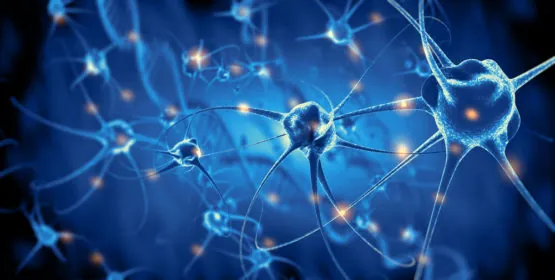Through a new approach dubbed AMBAR, the biotechnology company Grifols has attempted to reduce the amount of harmful, Alzheimer’s disease-causing amyloid beta in the brain by collecting it with a blood protein called albumin and draining it out of the bloodstream. This approach differs from the previous antibody and catabody approaches and offers new hope for sufferers of this neurodegenerative disease.
What is Alzheimer’s disease?
Alzheimer’s disease, named after its discoverer, is a slow and progressive disease that causes the degradation of the brains of its sufferers. This leads to memory loss, a decrease in problem-solving abilities, changes in personality, and other symptoms. It is associated with the accumulation of tau and amyloid beta in the brain.
This disease predominantly impacts the elderly, with incidence increasing rapidly beyond the age of 65, impacting 30% of people over the age of 90 [1]. It is thought to be the most common cause of dementia, with more than 50 million sufferers worldwide. This number is estimated to grow worldwide as a result of the aging population crisis [2].
Until now, there has been no clinically proven treatment for Alzheimer’s disease; all therapies have been strictly focused on lessening the symptoms without attempting to cure or slow the progression of the disease. Until recently, any therapies that attempted to address the root causes of the disease have failed.
How AMBAR works
Albumin can be thought of as a natural ‘molecular bus’, as it binds to all sorts of molecules and carries them into the bloodstream for later unbinding. Grifols has shown that amyloid freely passes between the brain and blood vessels with the assistance of albumin. Therefore, by draining amyloid-carrying albumin out of the bloodstream and replacing it with ‘empty’ albumin, the brain can be continuously emptied of beta-amyloid.
How it performed
In its phase III trial, AMBAR was shown to significantly and dramatically slow the rate of Alzheimer’s disease progression (ranging from 42% to 75%, depending on the scale used), measured both in terms of mental decline and the ability of sufferers to carry out the activities of daily life. Its clinical trials, which have involved thousands of people, have also shown this therapy to be safe.
Because this was a phase III clinical trial, the therapy has reached the end of its pre-sales research. All that remains is to get the therapy registered and accepted with the FDA, after which it will become available; this therapy will likely be available in the next few years if nothing changes.
Conclusion
While this therapy is not an outright cure, even disregarding its direct benefits to health, its success makes a powerful statement. For a long time, scientists have been unable to effectively treat Alzheimer’s disease, causing some people to question the validity of the amyloid model, which states that amyloid beta is the direct cause of this disease.
The fact that a treatment targeting amyloid was successful in delaying the progression of Alzheimer’s disease can increase our confidence in this model and could justify optimism for other amyloid-based approaches that may cure Alzheimer’s disease.
References
[1] Qiu, C., Kivipelto, M., & von Strauss, E. (2009). Epidemiology of Alzheimer’s disease: occurrence, determinants, and strategies toward intervention. Dialogues in clinical neuroscience, 11(2), 111. [2] Brookmeyer, R., Evans, D. A., Hebert, L., Langa, K. M., Heeringa, S. G., Plassman, B. L., & Kukull, W. A. (2011). National estimates of the prevalence of Alzheimer’s disease in the United States. Alzheimer’s & Dementia, 7(1), 61-73.




